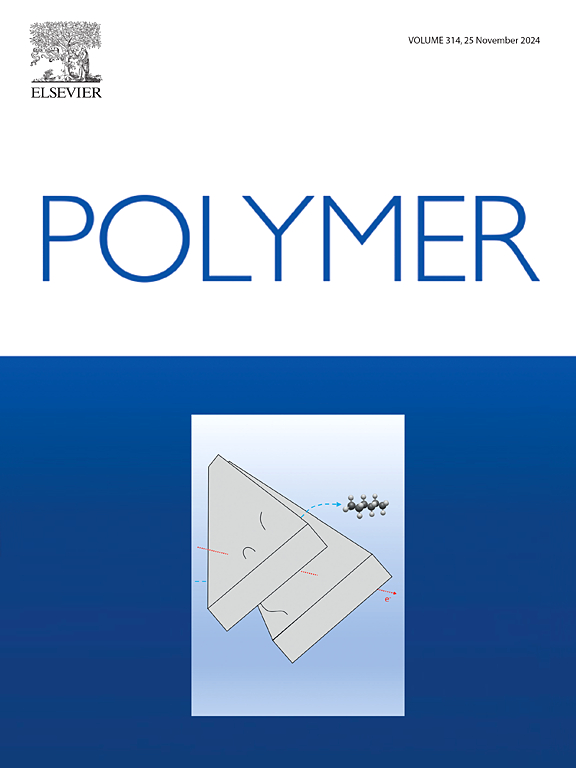Compatibility-driven modulation of mechanical property in 3D printed PEEK blends
IF 4.1
2区 化学
Q2 POLYMER SCIENCE
引用次数: 0
Abstract
Additive manufacturing of poly ether ether ketone (PEEK) is increasingly used to produce complex three-dimensional (3D) products, but controlling interlayer performance remains challenging. To address this, we synthesized a series of rigid fluorene-containing amorphous polymers by systematically modulating the molar ratio of resorcinol to bisphenol fluorene with varying compatibility with PEEK. These polymers were then blended with PEEK to investigate the compatibility effects on interlayer properties. A relationship among interlayer strength and the diffusion and entanglement of polymer chains was established. Isothermal crystallization studies revealed that blending with amorphous polymers extends the crystallization time of PEEK and enhances interlayer healing, thereby improving interlayer strength. Atomic force microscopy-infrared tests confirmed the accumulation and diffusion of amorphous and partially compatible fluorene-containing polymers at the interface of the blends, which enables the best-performing blends to have three times the interlayer strength of pure PEEK. These findings provide valuable insights into the molecular chain dynamics during printing, supporting the development of materials with optimized interlayer properties.


3D打印PEEK共混物中机械性能的相容性驱动调制
聚醚醚酮(PEEK)的增材制造越来越多地用于生产复杂的三维(3D)产品,但控制层间性能仍然具有挑战性。为了解决这个问题,我们通过系统地调节间苯二酚与双酚芴的摩尔比,合成了一系列刚性含芴的非晶态聚合物,并改变了与PEEK的相容性。然后将这些聚合物与PEEK混合,以研究相容性对层间性能的影响。建立了层间强度与聚合物链的扩散和缠结之间的关系。等温结晶研究表明,与非晶聚合物共混可以延长PEEK的结晶时间,增强层间愈合,从而提高层间强度。原子力显微镜-红外测试证实了共混物界面上非晶态和部分相容的含氟聚合物的积累和扩散,这使得性能最好的共混物的层间强度是纯PEEK的三倍。这些发现为打印过程中的分子链动力学提供了有价值的见解,支持开发具有优化层间性能的材料。
本文章由计算机程序翻译,如有差异,请以英文原文为准。
求助全文
约1分钟内获得全文
求助全文
来源期刊

Polymer
化学-高分子科学
CiteScore
7.90
自引率
8.70%
发文量
959
审稿时长
32 days
期刊介绍:
Polymer is an interdisciplinary journal dedicated to publishing innovative and significant advances in Polymer Physics, Chemistry and Technology. We welcome submissions on polymer hybrids, nanocomposites, characterisation and self-assembly. Polymer also publishes work on the technological application of polymers in energy and optoelectronics.
The main scope is covered but not limited to the following core areas:
Polymer Materials
Nanocomposites and hybrid nanomaterials
Polymer blends, films, fibres, networks and porous materials
Physical Characterization
Characterisation, modelling and simulation* of molecular and materials properties in bulk, solution, and thin films
Polymer Engineering
Advanced multiscale processing methods
Polymer Synthesis, Modification and Self-assembly
Including designer polymer architectures, mechanisms and kinetics, and supramolecular polymerization
Technological Applications
Polymers for energy generation and storage
Polymer membranes for separation technology
Polymers for opto- and microelectronics.
 求助内容:
求助内容: 应助结果提醒方式:
应助结果提醒方式:


